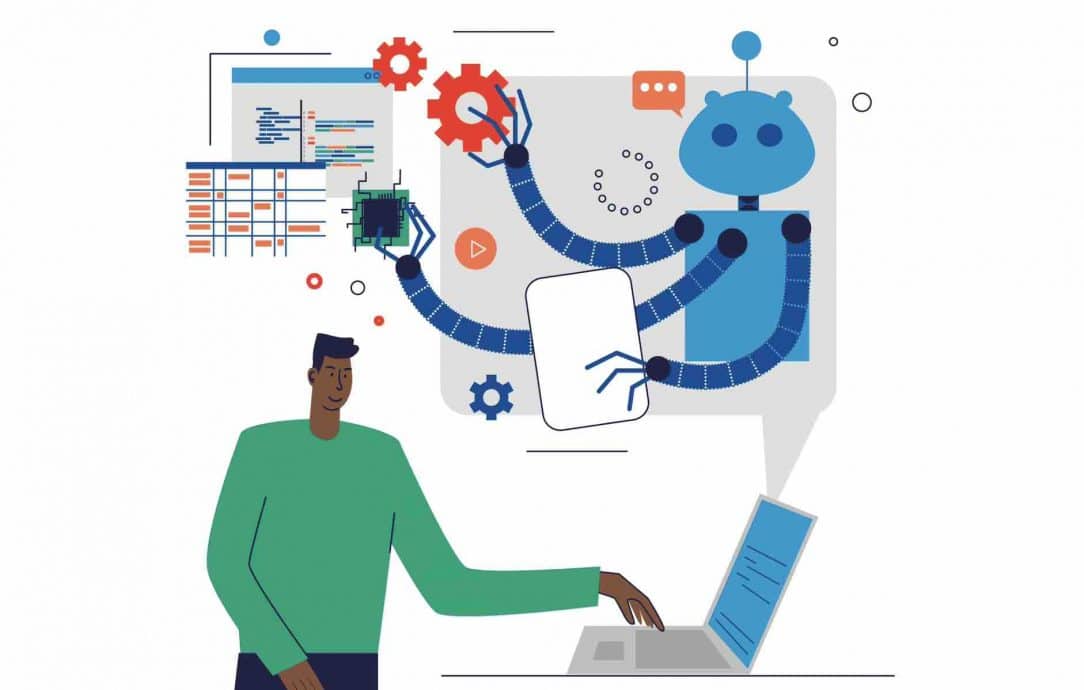Introduction
The world has been buzzing with excitement over the past few years as artificial intelligence (AI) has emerged as one of the most transformative technologies of our time. From self-driving cars to groundbreaking medical discoveries, AI is impacting most industries. But until recently, the power of AI was largely reserved for big corporations and research institutions. It left small businesses and individual developers on the sidelines.
That’s all changing now, thanks to Artificial Intelligence as a Service (AIaaS). This game-changing technology is making AI accessible to everyone. A new world of possibilities has opened up for innovation and problem-solving. So, let’s dive in and explore the what, why, and how of AIaaS!
Table of contents
What is AIaaS?
Before we delve into AIaaS, let’s take a moment to explore artificial intelligence (AI) in more depth. AI is a branch of computer science focusing on machines capable of mimicking human intelligence. At its core, AI relies on data and deep learning to learn and improve its performance over time. This data-driven approach enables AI systems to recognize patterns, understand natural language, make decisions, and adapt to new information.
Now, onto AIaaS. Artificial intelligence as a Service (AIaaS) bridges the gap between complex technology and end-user or developers. These cloud services offer AI capabilities to users on a subscription basis. In essence, AIaaS providers are third-party vendors. They handle the complex processes of developing, maintaining, and upgrading AI infrastructure.
In exchange for a fee, they let anyone access and utilize AI services and tools through the cloud. This approach allows businesses and individuals to integrate AI into their existing operations. All without the need for in-house AI expertise or infrastructure. AIaaS democratizes access to AI technology by lowering the entry barrier.
Also Read: Will AI Replace My Job?
How does AIaaS work?
AIaaS operates through a combination of Application Programming Interfaces (APIs), service providers, and pre-built models. These elements work together to make AI accessible and easy to implement for end users.
Application Programming Interface (API): APIs are the building blocks that enable communication and data exchange between different software applications. In the context of AIaaS, APIs serve as the bridge between the AI services offered by providers and the users’ applications. Users can access AI capabilities by integrating these APIs into their existing software. This allows them to harness AI functionality without developing AI algorithms or infrastructure.
Service providers: AIaaS providers specialize in developing AI services, tools, and frameworks. They invest in the necessary infrastructure, such as powerful computing resources and data storage. This ensures that their AI services run efficiently and effectively. These providers are responsible for the performance, security, and availability of the AI services they offer. Microsoft Azure, Amazon Web Services (AWS), and Google Cloud Platform (GCP) are some of the most popular providers of AIaaS.
Pre-built models: One of the key features of AIaaS is the availability of pre-built AI models that users can access and customize. These models are pre-trained on large datasets and have been optimized for various tasks. Popular examples include natural language processing, image recognition, and predictive analytics. By offering pre-built models, AIaaS providers save users the time and effort required to build AI models from scratch.
The Growth of AIaaS
The AIaaS market has been experiencing exponential growth, thanks in part to the increasing demand for AI-powered solutions across various industries. As more and more businesses recognize the value of AI technology, they are turning to AIaaS to access powerful AI capabilities without the complexity of in-house development.
One of the key drivers behind this growth is the rising interest in Natural Language Processing (NLP) applications. NLP is a subfield of AI that focuses on enabling computers to understand, interpret, and generate human language. With the ubiquity of digital communication, businesses are seeking ways to streamline interactions, both with customers and internally. AIaaS providers have responded to this demand by offering NLP-based services. These have become particularly popular in areas such as customer support and content generation.
Another factor contributing to the growth of AIaaS is the continuous evolution of AI technology itself. As AI becomes more advanced, the range of applications and use cases expands, fueling further interest in AIaaS solutions. The increasing availability of cloud computing resources also supports this growth. This availability has made it easier for AIaaS providers to deliver their services at scale, catering to a wider audience.
Types of AIaaS
The AIaaS landscape offers a wide range of services, catering to different needs and use cases across various industries. In this section, we will briefly introduce the types of AIaaS available. We’ll highlight the diverse possibilities that AIaaS providers offer to businesses and individuals.
Chatbots & digital assistance
A popular type of AIaaS is chatbots and digital assistants. They leverage AI technology to provide customer service, support, and information. These intelligent virtual assistants are designed to simulate human conversation and can interact with users through text or voice communication. Businesses can streamline their customer service operations and improve response times. The end result is a reduced burden on human agents.
One notable example in this category is IBM’s Watson Assistant. The AIaaS offering enables businesses to create their own customizable chatbots. Watson Assistant combines natural language processing, machine learning, and conversational AI to understand and respond to user inquiries effectively. This type of AIaaS service has become increasingly popular among businesses looking to enhance their customer engagement and support experiences.
Cognitive computing APIs
Cognitive computing APIs are another type of AIaaS that allow various platforms to communicate data. These usually include emotion detection, sentiment analysis, and pattern recognition. This service allows businesses to process large volumes of unstructured data, such as text, images, and audio. They can then extract actionable insights from them. Companies can use this insight to better understand customer behavior, preferences, and opinions. In the end, it leads to improved market positioning and decision-making.
For example, a cognitive computing API for sentiment analysis can analyze social media posts and customer feedback to determine the overall sentiment toward a product. This valuable information can be used to make data-driven decisions, such as adjusting marketing strategies or identifying areas for product improvement.
Machine learning frameworks
Machine learning frameworks are yet another category of AIaaS. They provide users with a comprehensive set of tools and resources for building, training, and deploying models. These frameworks enable developers to create custom AI solutions tailored to their specific business processes and complex tasks.
AIaaS providers offering machine learning frameworks typically provide pre-built algorithms. Data processing tools and APIs also facilitate the development of machine learning models. Additionally, they offer access to powerful computing resources, such as GPUs and TPUs. Those are essential for training large-scale models efficiently.
By using machine learning frameworks available through AIaaS, businesses can rapidly prototype, test, and deploy AI solutions. However, they won’t need extensive in-house development teams.
Why is AIaaS important?
AIaaS has become a crucial aspect of the modern technology landscape. Particularly as it connects with cloud computing services, its significance can be traced to a number of factors that render it indispensable for the widespread adoption of AI in diverse production environments and industries.
One of the main reasons AIaaS is essential is because it makes AI technology accessible and cost-effective for everyone. Without these providers, implementing AI solutions into production lines and operations would be considerably more challenging. This democratization of AI leads to improved efficiency and sparks innovation across industries.
Furthermore, it facilitates the rapid deployment of AI solutions in production environments. In the absence of AIaaS providers, companies would likely struggle to prototype, test, and deploy AI models. At least, they would struggle to do so as quickly. The development process typically associated with traditional AI development is lengthy. This agility enables businesses to remain competitive and adapt to market shifts. They can capitalize on every emerging opportunity.
Benefits & Challenges of AIaaS
AIaaS offers numerous advantages for businesses and individuals, but it also comes with its own set of challenges. This section will delve deeper into the benefits and challenges associated with AIaaS adoption. It should provide a more comprehensive understanding of its impact on organizations.
Benefits
- Cost-effectiveness: AIaaS eliminates the need for complex infrastructure, which can be costly to set up. By leveraging cloud-based services, businesses can reduce their initial investment. The lower ongoing expenses associated with AI adoption make it more affordable for organizations of all sizes.
- Scalability: AIaaS enables organizations to scale up or down their AI capabilities according to their needs. As cloud-based AI services offer virtually limitless computing resources, businesses can efficiently manage their AI workloads without investing in additional hardware.
- Faster deployment: With AIaaS, businesses can benefit from rapid prototyping. The testing and implementation of AI solutions enable them to stay agile. They can respond quickly to market changes, gaining a competitive edge.
- Access to pre-trained models: AIaaS providers offer pre-trained models for common use cases. This allows businesses to quickly integrate AI capabilities without the need to train models on custom datasets. Things like noise detection, updates, and monitoring can become automated. This saves both time and resources.
Challenges
- Data privacy and security: AIaaS relies on cloud computing. As such, ensuring the privacy and security of sensitive data is a crucial concern for organizations. Companies must carefully evaluate AIaaS providers and their security measures to protect their data from unauthorized access and breaches. Government agencies and others dealing with sensitive data are particularly at risk.
- Vendor lock-in: Dependency on a specific AIaaS provider can create challenges when switching providers. Organizations should assess interoperability before committing to a provider to avoid this issue. The dependence on a single provider can create long-term cost problems as well.
- Uncertainty over pricing: AIaaS providers are not always upfront about the costs associated with their services. Companies should conduct thorough research into potential providers and inquire about variable or hidden fees that could affect their bottom line in the future. It will facilitate better decision-making when selecting a provider.
- Customization limitations: AIaaS offers a wide range of pre-built models and tools. But some businesses may require more specialized or tailored AI solutions. These may not be readily available through AIaaS platforms. In such cases, organizations might need to invest in custom AI development to address their unique requirements.
Also Read: Could AI Replace Humans?
The future of AIaaS
It is clear that this technology is playing a crucial role in driving digital transformation across industries. The market ecosystem for AIaaS is continually evolving. New providers are constantly emerging, and existing ones are refining their offerings to serve us better. In the future, we can expect AIaaS to become even more accessible, versatile, and powerful. AIaaS providers will develop increasingly sophisticated solutions to address a broader range of use cases.
By embracing AIaaS, you can participate in the exciting journey towards a more intelligent and connected world.
References
“AI as a Service (AIaaS): What You Need to Know.” MonkeyLearn Blog, 20 Nov. 2020, https://monkeylearn.com/blog/aiaas/. Accessed 28 Mar. 2023.
Inc, Dash Technologies. “Understanding AIaaS: All You Need to Know about Artificial Intelligence as a Service.” Dash Technologies Inc, 16 Aug. 2021, https://dashtechinc.com/understanding-aiaas-all-you-need-to-know-about-artificial-intelligence-as-a-service/. Accessed 28 Mar. 2023.
Inc, Royal Cyber. “Artificial Intelligence as a Service & Its Advantages for Mobile Apps.” YouTube, Video, 10 Aug. 2020, https://www.youtube.com/watch?v=GomMe_WmFtc. Accessed 28 Mar. 2023.
“What Is AIaaS? AI as a Service Explained.” BMC Blogs, https://www.bmc.com/blogs/ai-as-a-service-aiaas/. Accessed 28 Mar. 2023.
“What Is Artificial Intelligence (AI) as a Service? Definition, Architecture, and Trends.” Spiceworks, https://www.spiceworks.com/tech/cloud/articles/artificial-intelligence-as-a-service/. Accessed 28 Mar. 2023.
What Is AWS Deep Learning? https://www.run.ai/guides/machine-learning-in-the-cloud/ai-as-a-service. Accessed 28 Mar. 2023.

